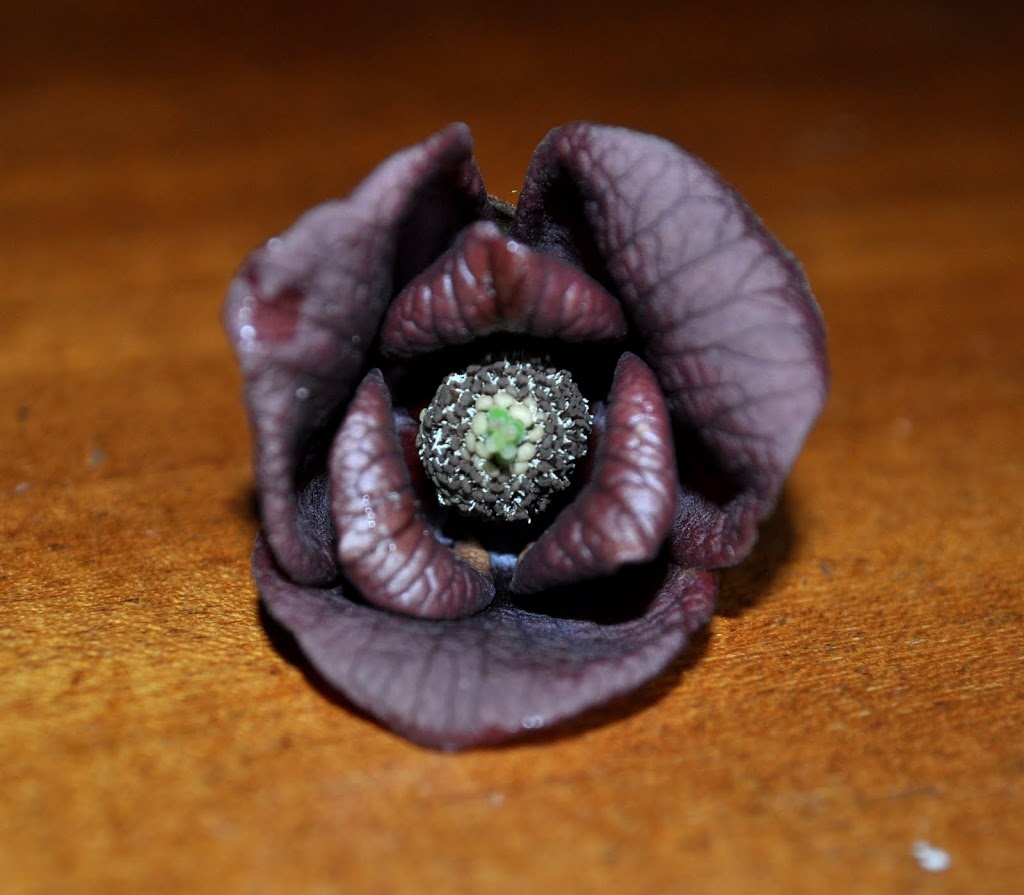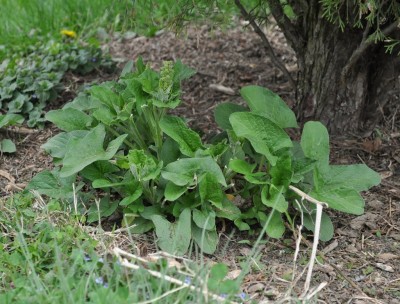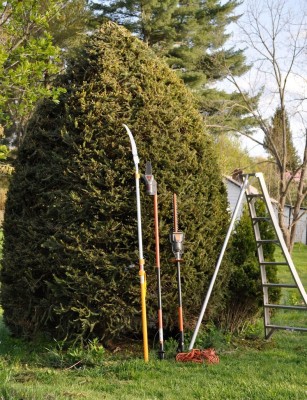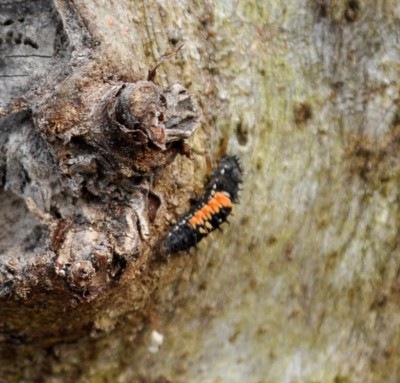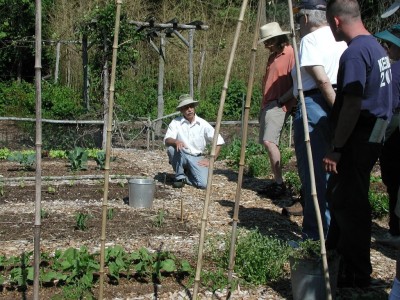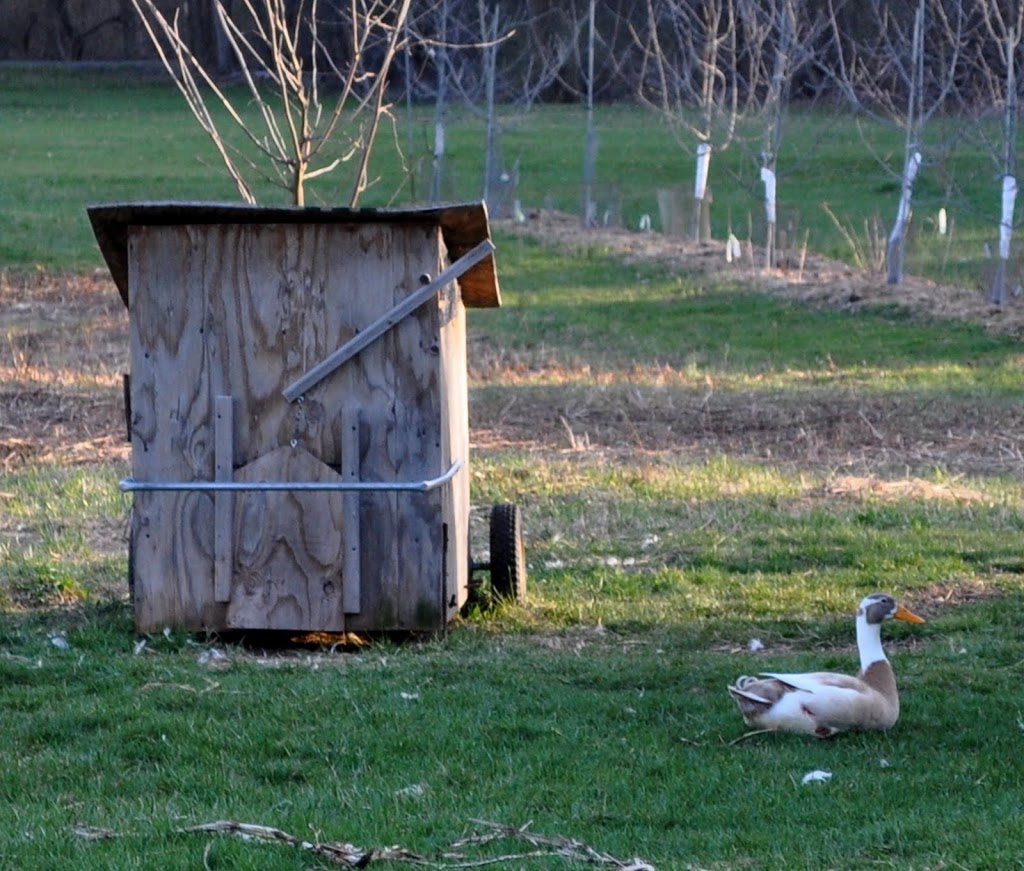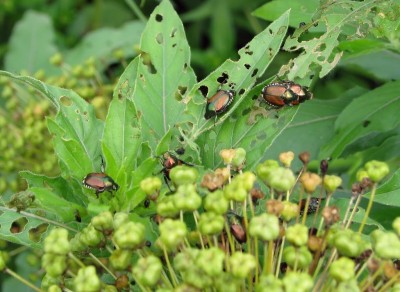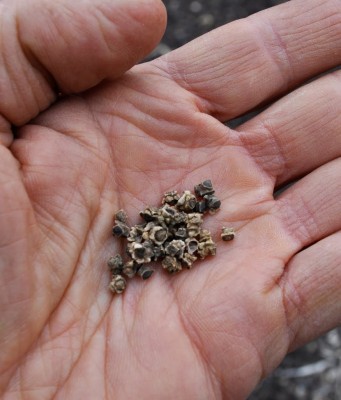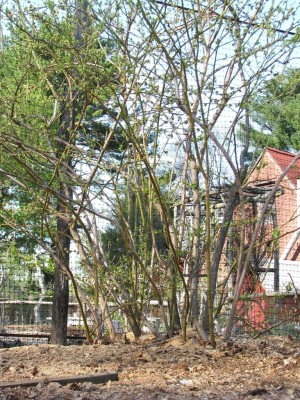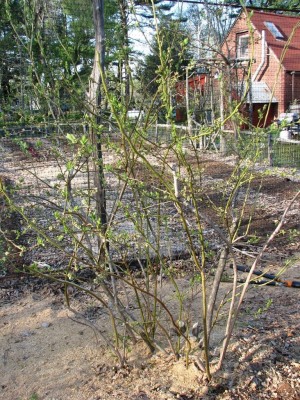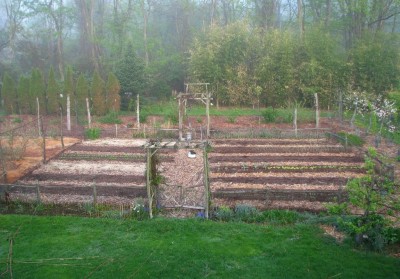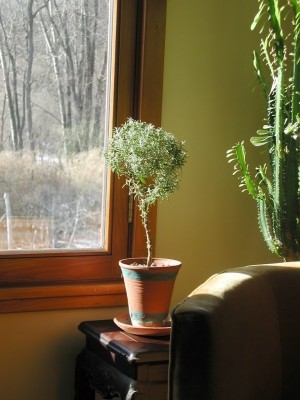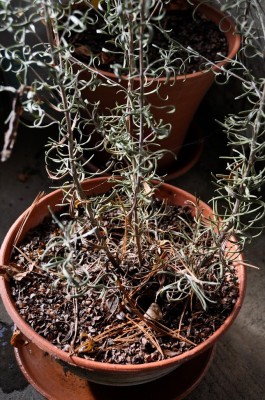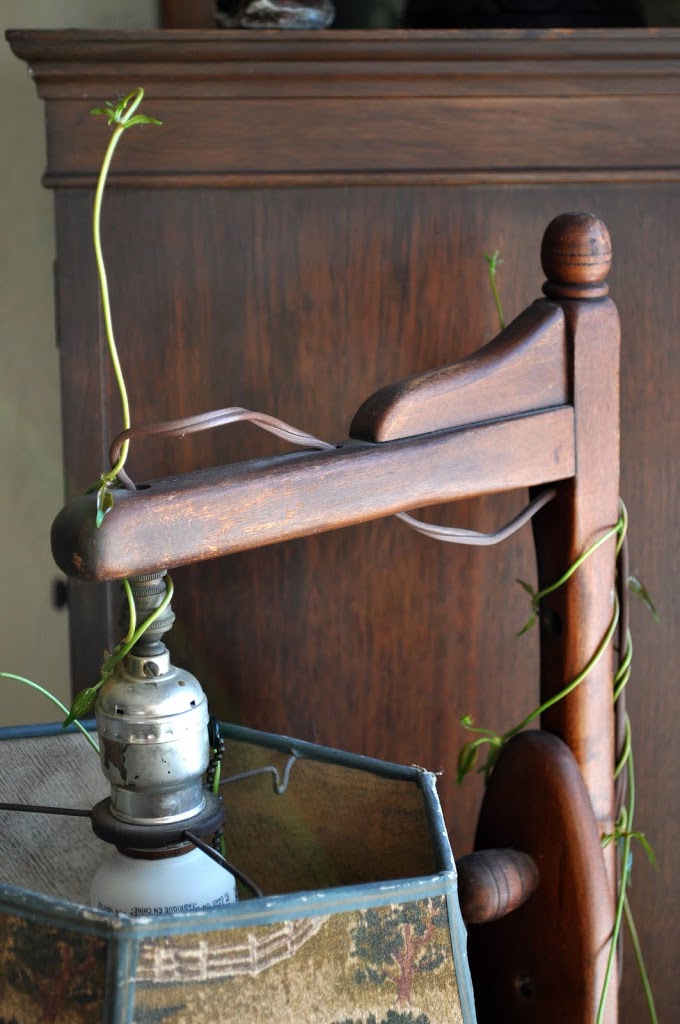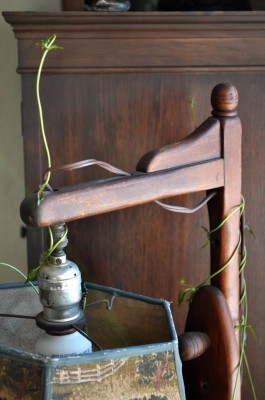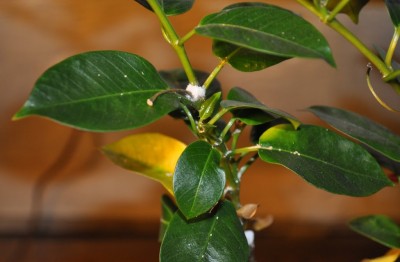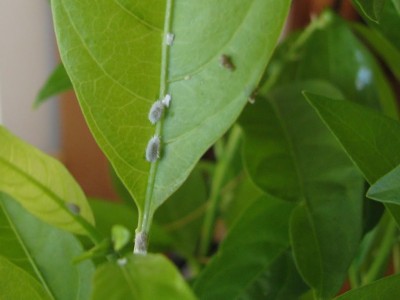[kelp, pawpaw flowers, south flower bed]
Today, with a nod to my ancestors, I’m going to spread dark green flakes over all the vegetable beds and beneath the fruit trees and bushes. That nod is not to my ancestors that came here from Poland, Austria, or Argentina, not even further back into the reaches of humanity from the savannahs of Africa. No, I’m referencing my – all of our – ancestors that first crept or waddled forth from the seas.
The dark, green flakes are kelp, a kind of seaweed; if the sea nourished our flippered progenitors, I figure it might also provide something nutritive to today’s iPod-appendaged humans. Kelp is rich in a grand array of trace minerals, many of which are known and some of which may become known as necessary to maintain health. So I’m spreading this stuff on my soil where its goodness can work itself up into my edible plants and, hence, my diet.
Spreading kelp here may be akin to “hauling coals to Newcastle.” After all, the ground in my vegetable beds has been beefed up over the years by annual dressings of compost an inch or two thick. Into that compost went not only all waste from my gardens and kitchen, but also manure, wood chips, and leaves that I’ve imported. Which is to say that my soil probably is already replete with a rich array of nutrients for my plants and me.
Emblazoned on bags or boxes of commercial fertilizers, organic and not, are three prominent numbers (such as 10-10-10 or 5-10-5) indicating the amounts of nitrogen, phosphorus, and potassium – NPK, for short — they offer. Nitrogen, phosphorus, and potassium are macronutrients, needed in relatively large amounts by plants and humans. Kelp supplies little of those nutrients. Still, fish, humans, and everything in between, need much of what kelp has to offer. A mere one pound per hundred square feet should do the trick.
———————————————-
I’m spreading that kelp far and wide, and when I get to my pawpaw trees I stop to marvel at their blossoms (first open April 25th, which is at least a couple of weeks earlier than usual, and opening over a long period of time). Not that the blossoms would stop you in your tracks. They hang down from the bare branches like nothing more than dark blobs.
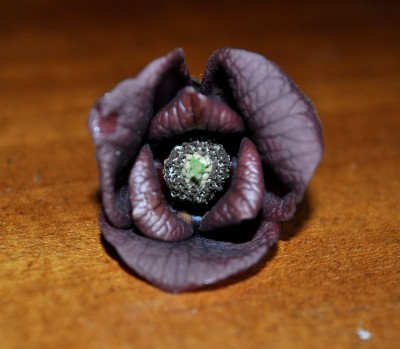
Looking a little closer, you see that they are dark, purple blobs. And then looking up into the downward hanging blossoms from below, you see that the petals brighten to a lurid purple. The center of the blossom is home to a ball of white, filamentous anthers that shimmy when the branch is shaken.
More than just appearance makes pawpaw blossoms interesting. For one thing, you won’t see any bees buzzing happily about. That’s because pawpaw blossoms are pollinated by carrion insects. The blossoms reputedly smell like rotting meat to attract those insects, although I don’t detect any aroma at all, good or bad, even sticking my nose right into the blossoms.
Pawpaw blossoms also have multiple ovaries. Depending on pollination, each blossom can give rise to a cluster of up to 9 fruits. And each fruit can be large, the size of a small mango.
The main attraction of pawpaw is the ripe fruits that follow successful pollination. (The fruits are what earned pawpaw a whole chapter in my book Uncommon Fruits for Every Garden.) Although native, the fruits are not what you’d expect to find in this neck of the woods. The fruit – the whole plant, in fact – seems to have tropical aspirations. The leaves are large and lush. The fruit’s flesh is creamy and white like banana and has flavor that’s a mix of vanilla custard with mango, pineapple, banana, and avocado.
———————————————-
In one of my flower gardens, the battle has begun. This garden started as nothing more than some pink and some red bee balm that someone gave me that I planted along a small section of south-facing wall of my house.
Along with the bee balm, some bearded irises that came along for the ride, and stayed. How nice. So did dayflowers. Not nice because the have spread well beyond that bed.
This garden was never a bona fide flower garden with a well-defined edge; rather, it’s always been nothing more than some flowers I planted near a wall. So the space is shared with resident grasses and invading wild grape vines, both of which I occasionally weed out to some degree. Garlic chives also makes appearances. I weed it out ruthlessly.
Then someone gifted me a peony, which went in off to one side of the “garden.” I had a trellis of sorts along the other side, at the base of which I planted hops vines. Hops themselves can become weedy as they spread by underground runners.
The white, stucco wall and clumps of flowers always seemed to cry out for some tall, thin pastel-colored hollyhocks. I started those from seed summer and put in 4 plants a couple of weeks ago.
Thus far, the flower plants and weeds maintain congenial, attractive coexistence with just a little help for me. Every time I introduce something new, I wonder how the balance may tilt.

